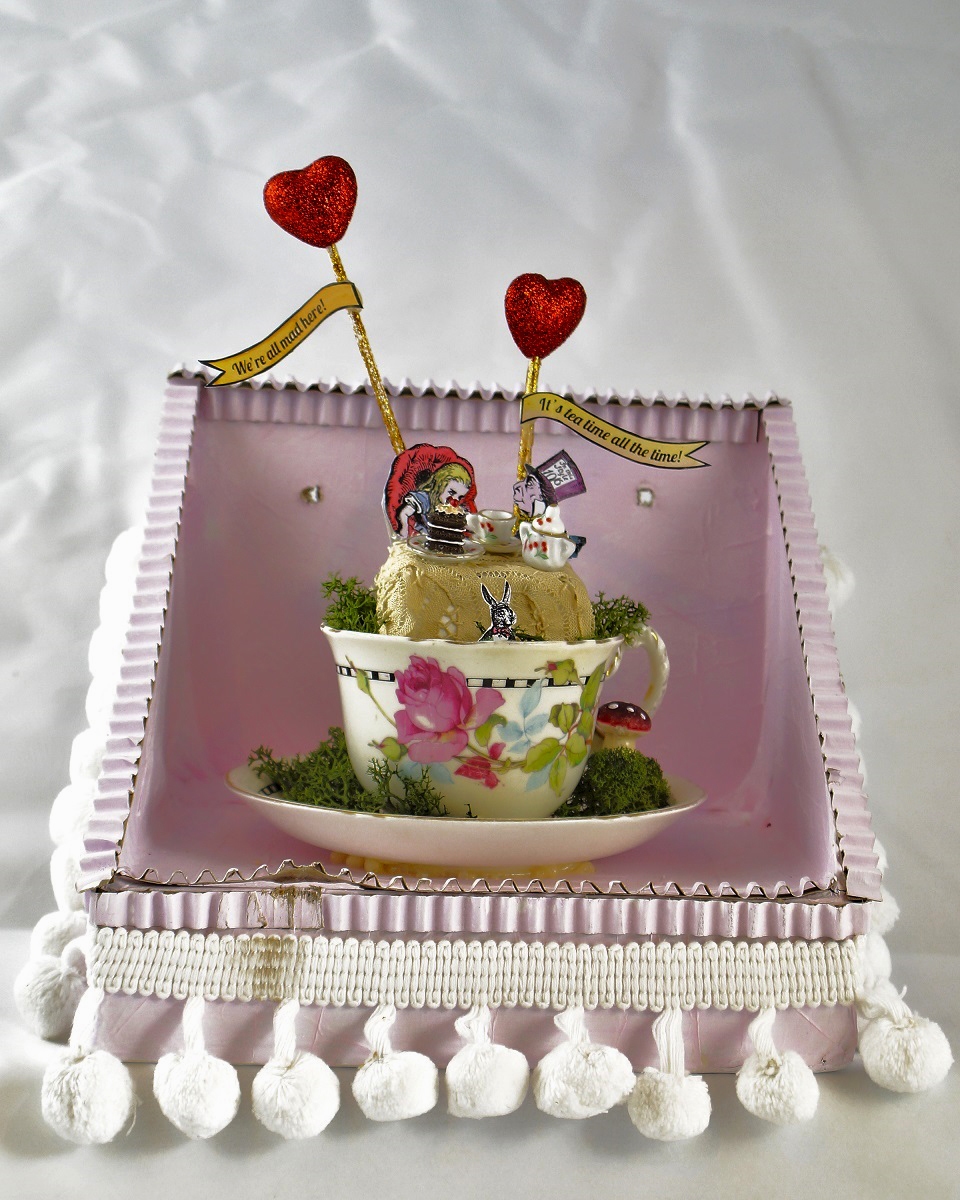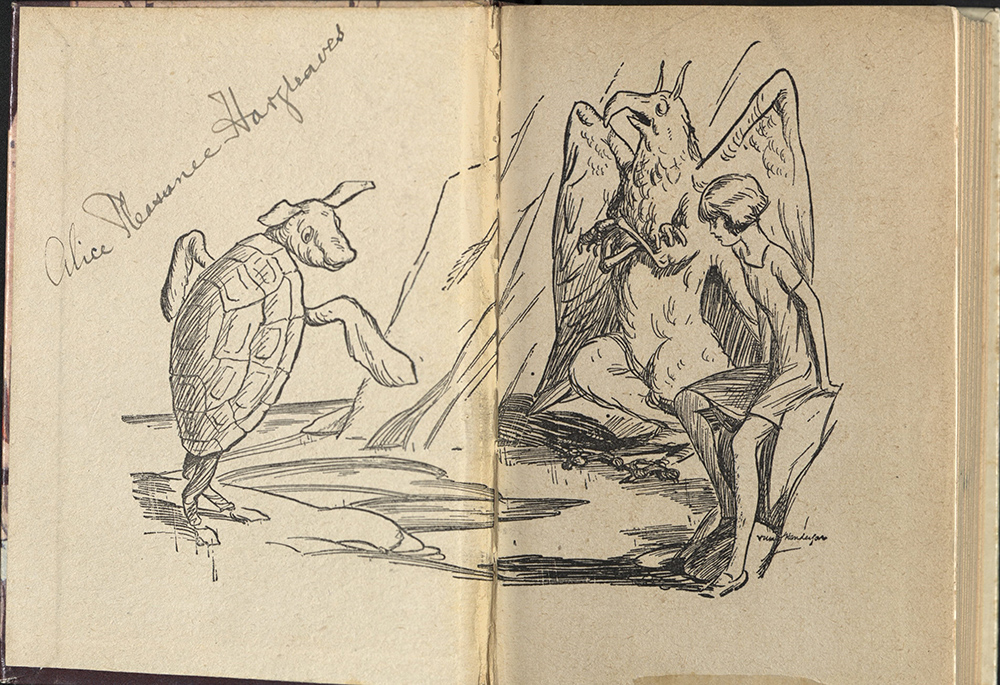24 June 2015
.jpg)
I'd never heard of Bugsworth Basin - had you? But I had an email from them recently, and found out that that the Bugsworth Basin Trust, in Derbyshire's Peak District is a canal basin that was once an intersection with the old Victorian Peak Forest Tramway, which transported limestone from local quarries. Click here for their website . It's an attractive area, and I was intrigued by the name. I discovered the local village used to be "Buxworth," (perhaps something to do with the town of Buxton, not far away) but "Bugsworth" is undoubtedly more memorable.
Anyway, if you are wondering what connection all this has with Alice, well, it seems it would have been worth being in Bugsworth over the Easter weekend. They had a Mad Hatters tea party, in a marquee decorated by local children and their carers
.jpg)
- over a hundred kids, who clambered through a rabbit hole, here seen guarded by the White Rabbit and Cheshire Cat. Interesting, isn't it, that the Cheshire Cat is now associated with Disney's colours of purple and pink?
.jpg)
I was very taken by this cake, depicting carrots in the earth - just the sort of cake a white rabbit might like ...
.jpg)
And impressed by the high quality of the art work. These are just a couple of examples.
.jpg)

Not to mention the face painting - a bit scary, this one....

Having been involved in a few community events myself, I have a rough idea of what is involved, and I can't even begin to think of the amount of organisation that this treat must have taken, so well done to all the volunteers and local businesses involved in Bugsworth Community Gala for an incredible joint effort. I dare say Lewis Carroll would have been impressed. He used to help his dad, the rector, with parties for the local children. In those days they involved lantern slides, currant buns and party pieces. No doubt they had just as much of a good time, though.
The only thing that seemed to be missing from the event was Alice herself. Really? Well, she wasn't in any of the photos I saw. I'll ask the organisers, but on reflection, I quite like the idea of a Mad Tea Party without Alice. It feels easier to get involved without the girl in blue getting all the limelight....
19 June 2015

Here's a photo of an an editorial meeting of "Punch" magazine. Carroll fans know that Tenniel did the original illustrations to both Alice stories. But can you spot him? I'm going to post this question on the Facebook page, here, and someone I suspect will soon post the answer.
12 June 2015

This is "Memoria Technica for Numbers," is a technique that Lewis Carroll devised to help remember difficult numbers. He made several copies to send to friends and colleagues, and used his new Parker electric pen to do it. In those days, before even the invention of carbon paper, it was difficult to make copies, and many companies looked for solutions, with various degrees of success. Often copying processes were so laborious and expensive that businesses found it cheaper and simpler to employ clerks whose job was to copy all the correspondence out by hand.
This pen, designed by that genius Edison, worked by pricking holes in the paper and rubbing ink into them. Carroll bought it on 20 June 1877 He used it it to produce many duplicated items to circulate among his friends. The British distributor of the electric pen, The Electric Writing Co. Ltd., published this testimonial from Dodgson in their edition of the electric pen instruction manual:
July 11th, 1877
I have tried the new Electric Pen for writing MS, printing and drawing, and consider it perfectly successful for all three purposes. For simplicity, expedition, and cleanliness in working, it seems to me to be quite unrivalled, and those who, like myself, often require twenty or thirty copies of questions or formulae, &c., will save the cost of the machine in printer's bill several times over in a year.
CHARLES L. DODGSON
Mathematical Lecturer of Ch.Ch., Oxford
The letter is dated only a few days after he bought it, and one imagines him being so delighted that he wrote his letter right away, rushed out and posted it. I hope it proved reliable and he continued to like it so much.
11 June 2015
I've been away so couldn't post it before, but here is a piece in The Times for 1 June.


10 June 2015
.jpg)
Click the link for an this online demonstrator for Carroll's "The Game of Logic" I daresay that if Carroll lived today, he would have created something like this himself.
But since he's not alive, I'm very grateful to Mark Richards for doing it!
08 June 2015

I'd heard that the Houghton Library at Harvard had an Alice 150 site based on its collections, but I hadn't got around to checking it out. But a friend reminded me to do so, and I think it's charming. Take a look
The image at the top of this post shows one of the items in the collection. It is a copy of Alice in Wonderland owned by Alice Hargreaves herself. Although she told nobody about her connection with the famous book for most of her life, she did quietly collect editions of it. How interesting it would be to know what she really thought about the whole thing, and why she never spoke about it until, short of money, she needed to sell the original manuscript. It must have been a most peculiar experience to gradually realise that "her" story was becoming world famous.
This kind of vicarious fame hasn't been good for some others who were inspiration for famous books, notably "Christopher Robin" Milne, who fell out with both his parents, and whose mother refused to see him even on her deathbed - and Peter Llewellyn Davies (Peter Pan) who actually killed himself. These examples were well in the future for Alice and Lewis Carroll, of course, but perhaps Alice's parents were wise not to encourage her to become precociously famous for something that was none of her doing.
The sad fate of many child stars comes to mind, too. Their lives are defined by something they had to do before they were old enough to make a reasoned choice... although some, like Shirley Temple
.jpg)
managed to use their early, unlooked-for fame as a stepping stone, rather than as a millstone. I wonder if anyone has written a study of the effects of childhood fame.
